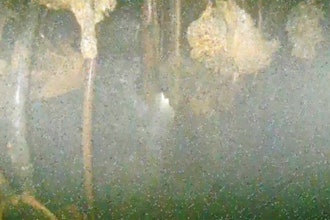SEATTLE (AP) -- Maia Driver recently decided to return a pink cushion she bought for her daughter after learning the foam in it was likely treated with chemicals intended to prevent fires but that were also potentially harmful.
Worried about possible risks to her family, the 42-year-old Seattle mom checked other household items and called around to find a new sofa that didn't contain the chemicals.
"We don't want our houses or our kids to burn up, but I think it's a little bit archaic," Driver, a writer, said of the widespread use of fire retardants. "Why are kids' pajamas treated with flame retardants?"
Bills introduced in the Washington Legislature this year would ban two chemical flame retardants — TCEP and chlorinated Tris, or TDCPP — from sofas and children's products such as strollers, changing pads, car seats and nursing pillows.
"We've got more and more data to show we need to protect kids," said Sen. Sharon Nelson, D-Maury Island, sponsor of Senate Bill 5181. Rep. Kevin Van De Wege, D-Sequim, is sponsoring the companion House Bill 1294.
Manufacturers often add the chemicals to polyurethane foam, plastics and fabrics to prevent fires or slow their spread. It's a cost-effective way to comply with a fire standard set by California in 1975 but is widely followed by manufacturers.
The chemical industry, which lobbied against similar bills last year, says flame retardants have played an important role in reducing fires and can save lives.
"We believe these decisions need to be based on good science," said Bryan Goodman, a spokesman for the North American Flame Retardant Alliance. "Unfortunately, the bill being considered in Washington state would go beyond the ban on these two chemicals and could eventually restrict other flame retardants without a full, scientific review."
In a statement, the Juvenile Products Manufacturers Association said products manufactured by its members are made following stringent safety requirements and federal standards that prohibit products that result in hazardous exposure to any toxic substance.
New York became the first state to prohibit the sale of certain child care products containing one type of flame retardant called TCEP. That ban begins Dec. 1.
A bill introduced in the Maryland Legislature this year would prohibit the sale of children's products containing TCEP, while bills in Washington would ban both TCEP and TDCPP.
"As new science continues to come out, we're going to see a market shift away from these toxic chemicals and toward healthy materials," said Ivy Sager-Rosenthal, campaign director for the Washington Toxics Coalition, which is pushing the bills. "There are more efficient ways to reduce the threat of fire."
In the late 1970s, manufacturers stopped using certain flame retardants in children's pajamas. Chlorinated tris, or TDCPP, wasn't banned like another related compound, but it was voluntarily withdrawn over health concerns.
New research shows the potentially cancer-causing chemicals are finding their way into strollers, car seats, crib mattresses and other baby products, as well as sofas. The chemicals can migrate and settle in household dust and could be ingested or inhaled.
A June 2011 study in the journal Environmental Science & Technology found more than a third of 101 foam samples taken from baby products contained chlorinated tris. In a November 2012 study in the same journal, researchers tested 102 foam samples from sofas and found more than 40 percent contained chlorinated tris.
The studies did not evaluate human health exposure to the chemicals, which Heather Stapleton, lead author of both studies, says researchers are currently working to understand.
"There's a lot of ambiguity about the effectiveness of these chemicals," said Stapleton, an assistant professor of environmental chemistry at Duke University. "To me, if they're not needed, and they're not providing any fire benefit, why take the risk? Are they offering any fire safety advantages?"
In 2011, the state of California put TDCPP on its list of cancer-causing agents — which doesn't ban the chemical but requires warning labels. The state cited studies showing increases in the incidence of benign and malignant tumors in lab rats exposed to the chemical.
The Washington Department of Ecology is considering adding TDCPP to the state's list of chemicals of concern though it hasn't started the rule-making process, ecology toxics coordinator Carol Kraege said. If the chemical is added to the list, manufacturers would be required to report its use.
Many manufacturers turned to these chemicals when commonly used flame retardants called polybrominated diphenyl ethers, or PBDEs, were phased out several years ago over health and environmental concerns.
"The reason that we're here is that we banned PBDEs," said Todd Myers, environmental director at the Washington Policy Center, who is concerned the state will ban a current flame retardant without having a known alternative. "We are banning well-known flame retardants in the hopes that some unknown flame retardants will come along and be better."
Seattle mom Marita Graube said she erred on the side of caution when she opted to spend more on an organic cotton mattress for her 18-month-old daughter.
"It's really hard to say whether the cheaper mattress would have been just fine," said the 33-year-old technical writer. "You don't want to take a chance. You just don't want to look back and think, 'If only I had done the right thing.'"
AP reporter Jonathan Kaminsky in Olympia, Wash., contributed to this report.






















